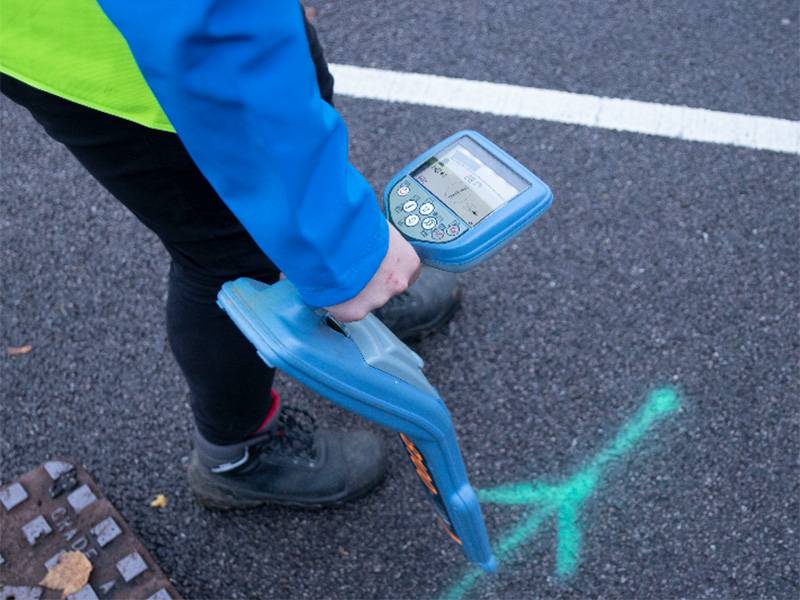From Development to Environmental Care: GPR Surveys Revealed

Ground Penetrating Radar, or GPR, is a powerful tool that has transformed the manner in which we deal with both the building and conservation. Thanks to its capacity to non-invasively scan below the ground, GPR studies are revolutionizing the detection of and examine utilities underground, archaeological locations, and the integrity of structures in multiple settings. Such innovative technology is crucial for engineers, archaeological experts, and environmental professionals alike, delivering them with important data to improve the efficiency of projects and safety measures while reducing hazards.
In the current fast-paced world, the significance of GPR studies cannot be overstated. Starting with helping identify potential obstacles before construction begins to uncovering hidden treasures under the surface, GPR is not just a technological advancement—it signifies a significant shift in how we understand and our interaction with the ground around us. In this article, we will explore the benefits of GPR studies, the technology behind this technology, and their applications in various industries, providing a comprehensive examination for anyone interested in leverage the power of this extraordinary instrument.
Understanding GPR Techniques
Ground Penetrating Radar, or Ground Penetrating Radar, is a non-destructive geophysical approach that utilizes radar signals for image the subsurface. By emitting high-frequency radio waves through the ground, GPR detects the returned waves from various subsurface elements. The strength and time taken for these signals to return to the top help in identifying various materials, infrastructures, and voids under the ground. This proven technology is increasingly gaining popularity in various industries due to its effectiveness and efficiency.
The technology behind Ground Penetrating Radar includes a sender that sends out radar signals, and a receiver that captures the reflected waves. When these signals hit boundaries between different materials – like soil, rock, and artificial objects – they reflect to the top. The data collected is then analyzed to create high-resolution images and profiles of the subsurface, revealing information such as the depth and configuration of utilities, geological formations, and possible irregularities.
As GPR technology continues to advance, improvements in data analysis and interpretation software enhance the clarity and accuracy of the findings. This evolution allows for complex examination, allowing professionals in construction, historical studies, and environmental studies to take knowledgeable choices based on accurate subsurface information. With its growing capabilities, GPR stands out as a crucial instrument for modern subsurface investigations.
Benefits of GPR Surveys
GPR surveys offer a non-destructive method for detecting features below the surface, making them invaluable in various industries. One key benefit is the capability to provide real-time data without the need for digging. This means engineering teams and construction teams can locate and chart underground utilities, geological formations, and other structures quickly and efficiently, greatly reducing the risk of damaging existing installations. The ability to see what lies beneath the surface before any ground disturbance allows for improved preparation and execution of construction projects.
Another benefit of GPR surveys is their affordability. By detecting potential issues before they become serious, GPR can help avoid costly delays and repairs associated with hitting hidden utilities or structural anomalies. Additionally, GPR technology can enhance the construction process, as teams can make informed decisions based on accurate underground assessments. https://landsurveysworcestershire.co.uk/best-gpr-survey-worcestershire/ reduces time lost but also minimizes financial costs, ultimately leading to more successful outcomes.

Moreover, GPR surveys enhance safety on construction sites. By clearly identifying underground risks like pipes or voids, teams can work with confidence, reducing the likelihood of incidents caused by unexpected encounters with utilities. This enhanced safety contributes to a more efficient workflow and can lead to lower insurance costs over time. The combination of improved safety, financial savings, and operational efficiency makes GPR surveys an indispensable tool in contemporary construction and engineering practices.
Uses in Industry
Ground Penetrating Radar surveys are progressively utilized across multiple industries for their potential to provide detailed subsurface imaging lacking the requirement for large-scale digging. In construction and civil engineering, this technology helps in locating infrastructure, identifying potential obstacles, and evaluating ground conditions. This information is crucial for maintaining security and adherence with standards, significantly minimizing the risk of damage to existing structures during recent construction or renovation tasks.
In the area of archaeology, Ground Penetrating Radar has changed how researchers locate and document historical items without the need for interfering with the earth. By mapping out the underground strata, anthropologists can identify the locations of potential excavation locations, which enables more efficient digging processes and the conservation of cultural contexts. This gentle method improves the ability to uncover hidden treasures while limiting environmental impact.
Ecological and geotechnical investigations also gain greatly from this technology technology. It helps in analyzing pollution, determining groundwater depths, and grasping soil makeup. These surveys provide critical data to designers and ecological researchers, enabling educated decisions in remediation projects and guaranteeing sustainable land-use practices. The flexibility of GPR makes it a useful resource across a diverse spectrum of sector applications.
